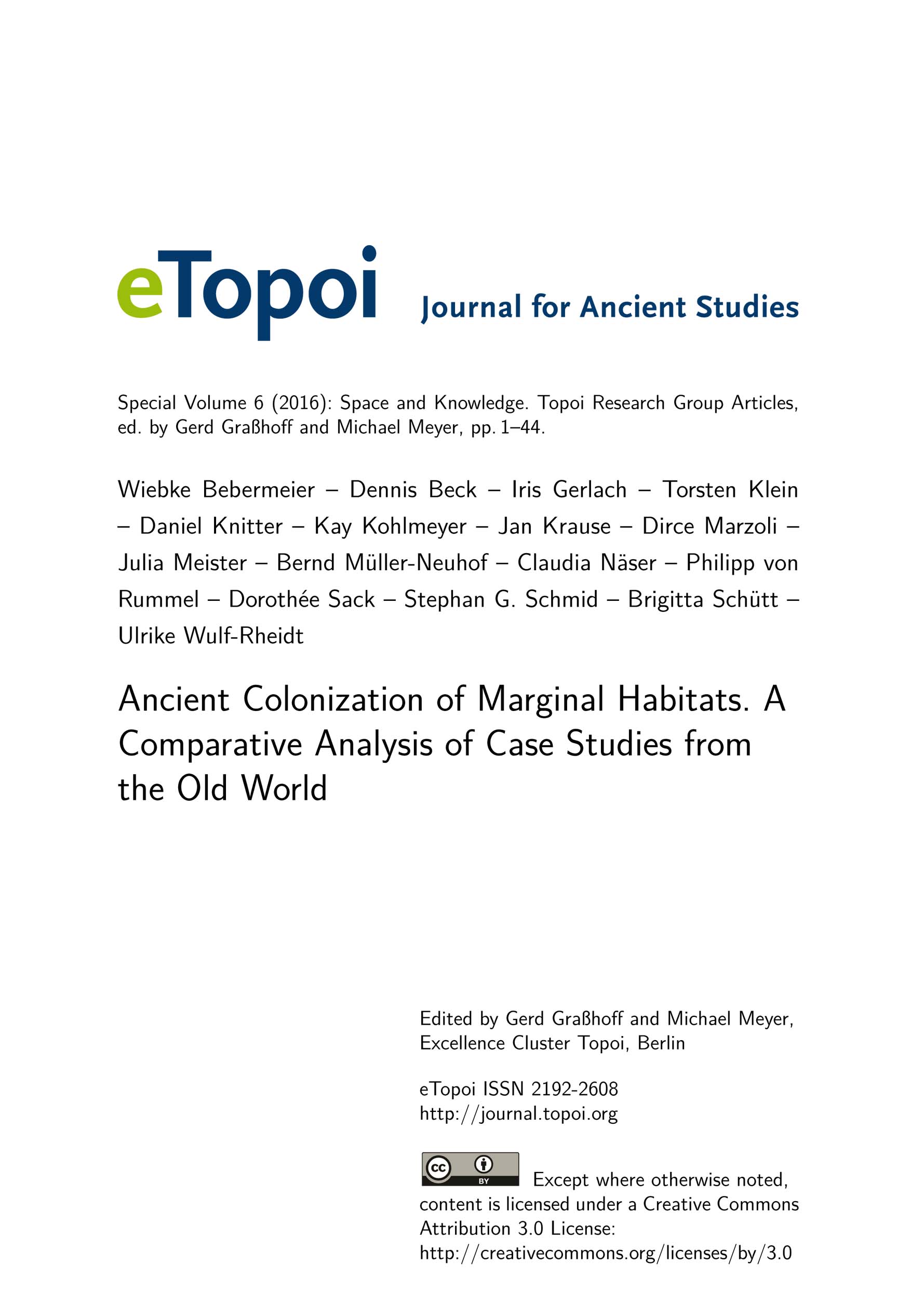Ancient Colonization of Marginal Habitats. A Comparative Analysis of Case Studies from the Old World
The present contribution deals with the concepts of marginal habitats in selected regions of the ancient world, ranging from modern Spain to the Jordanian desert and from Turkey to the Ethiopian highlands. Central to this research is the hypothesis that the occupation of areas beyond the ‘normal’ settlement patterns corresponds to colonization processes which reflect specific social strategies and may have stimulated the development of new technological skills. A review of ‘marginality’ research in various disciplines indicates that there is no comprehensive definition of the concept, which can be approached from a multitude of perspectives and with manifold objectives. A survey of the eight case studies and two more in-depth discussions of the sites of Musawwarat (Sudan) and Ayamonte (Spain) highlight the potentials as well as the limits of the archaeological investigation into past marginalities. Patterns of spatial marginalization are the easiest to detect. The studies also show that we must not limit our analysis to the adverse factors connected to different kinds of marginalities. Instead, our analyses suggest that spatially marginal areas were deliberately chosen for settlement – an integration with core-periphery approaches may help us to understand these scenarios, which have received little attention in ‘marginality’ research in archaeology or elsewhere so far.

